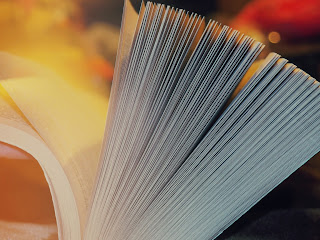Stop the presses! She's talking about Wales again!
Look, I know, I talk about Wales a lot but that's because
a) I'm Welsh,
b) this is one of the most beautiful and magical places on the planet,
c) you guys seem to know very little about my lovely country/principality, and
d) WE ARE NOT ENGLISH AND I WANT THE WORLD TO UNDERSTAND THAT.
So, humour me a little more, and let me tell you about Welsh Halloween traditions. Most of which, unfortunately, are now passed over in favour of trick or treating and parties.
I never went trick or treating, but that's because my parents are socialist hippies who viewed it as a disrespectful form of begging.
And I'm vegetarian and most of the sweets were made with gelatine.
(I did go trick or treating with two of my mates as a teenager - I told my parents we were just having a party at one girl's house. I'm such a rebel, lol.)
Pumpkins
My mother tells me when she was young, they would carve swedes for Halloween. Yes, swedes. Not pumpkins.
Pumpkins actually aren't native to the UK, and in the 60s and 70s, it was easier to get hold of swedes instead (though definitely more difficult to carve!)
Also, Jack o'Lantern is an old British (yes, that includes non-Welsh Britain,) word for a Will o'th' Wisp - a dancing light sprite/fairy/spirit thing that tempted travellers into dangerous places like swamps and hidden pools.
Nos Galan Gaeaf
The Welsh version of Halloween is Nos Galan Gaeaf (not to be confused with Nos Galan - New Year's Eve.)
Nos Galan Gaeaf is the night before the first day of winter. It was thought to be Ysbrydnos - a night when spirits are abroad and able to gather at places where the worlds are close together like graveyards, stiles, crossroads, bridges, etc.
Divination
Halloween has always been the perfect time for divination here, because the other world is close. It's also one of our most important Halloween traditions.
One form of divination involved hanging clothing/underwear on a washing line at midnight.
Some stories tell of young women hanging their knickers on the line; the spectre of the man she was to marry would appear and touch them (I know, this story sounds considerably dodgy.)
Some stories say that the future was revealed by whatever ghostly image appeared by a person's clothing - a crib, for example, meaning the person would have a child soon.
The spookier stories tell of coffins appearing above a person's clothing, and death soon after.
Then there's the rocks, placed in a fire, with the names of the people in the household written on them.
If the rocks were gone in the morning, that person would die within the year. This was mainly a North Welsh tradition, I think, so I don't know much about it.
In honesty, there seem to be as many divination rituals here as there are families.
Everyone seemed to have a different method of telling the future, though even within the last 50 years it's gotten less and less.
Apple-bobbing was also a divination method; that's how it started. The first girl to actually bring up an apple was the next to be wed.
And of course, they would then peel the apple, in as long a strip as possible. You then drop the peel, and whatever letter it seems to make will be the initial of the person you are to marry (this one is still relatively popular.)
Mari Lwyd
Still occasionally carried out, mari lwyd ('the grey Mary') is a traditional costume and/or effigy using a horse's skull, garlands, and a sheet.
It's now usually used around Christmas and New Year, but originally was used at Halloween too. It chases people (in modern times, the people have agreed to this!) around their homes in exchange for money and/or food.
No-one actually knows why.
Goblin/ghost funerals
This isn't a phenomena specific to Halloween, but I think it's probably worth mentioning here, as the worlds being closer together ups the chances of it occurring.
There are numerous stories here of processions of the dead - sometimes this is the people who will die within the year, all marching through country lanes, sometimes it is the portent of a funeral to come - complete with the mourners who will be there.
Sometimes it's a procession of Y Tylwyth Teg - the Fair Folk, (the Grey Folk, the Ladies and Gentlemen, the Old Ones, etc.) carrying out their own funerals.
(Always speak respectfully of the Grey Folk, and never thank them - they don't like it. Also an alcoholic beverage, or some sugar, or some dairy produce, will go a long way. And potentially make the local cats very happy.)
Look, we have a lot of folklore - and I read a ridiculously large amount of local folklore books, ok? ;)









